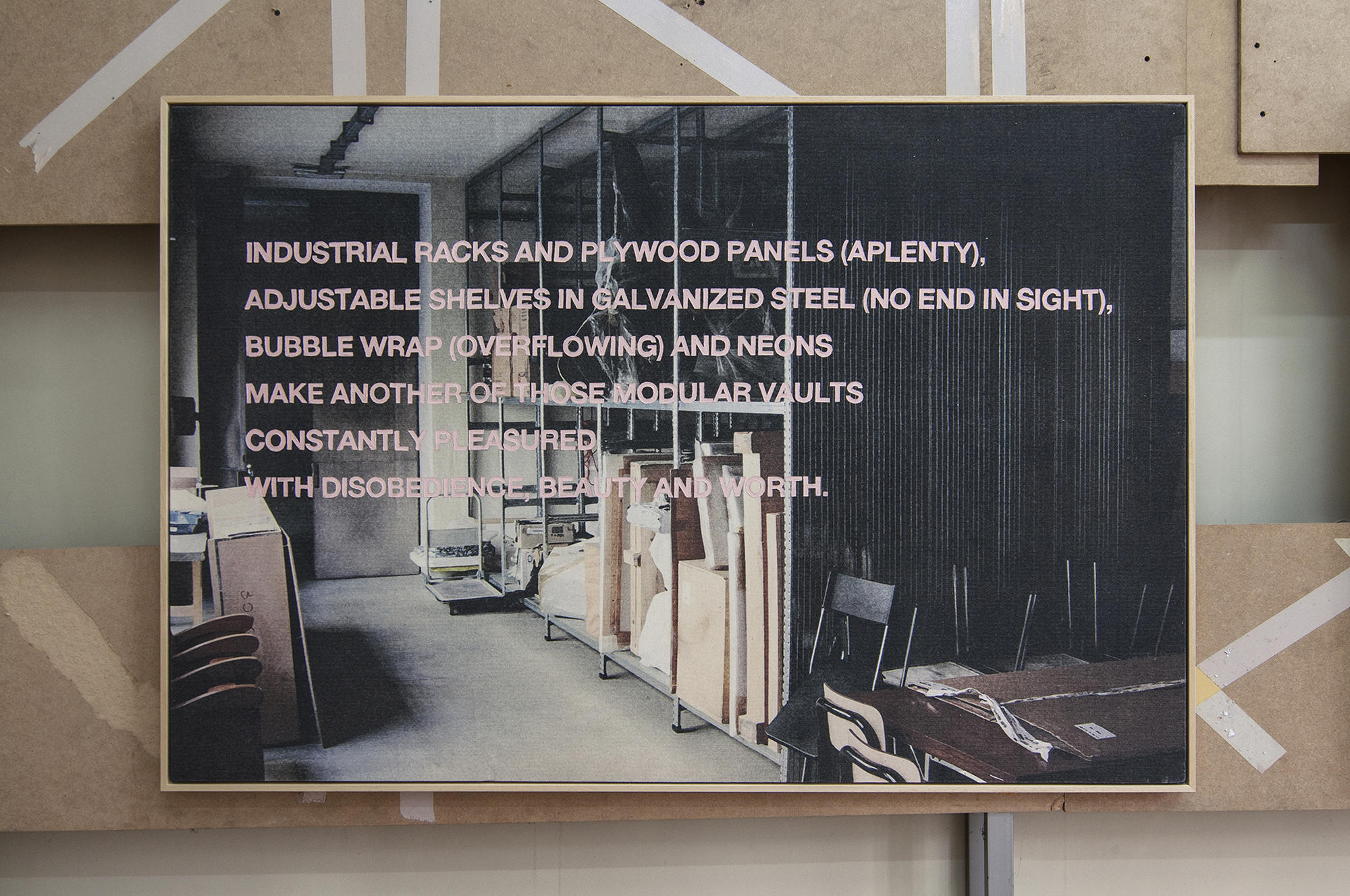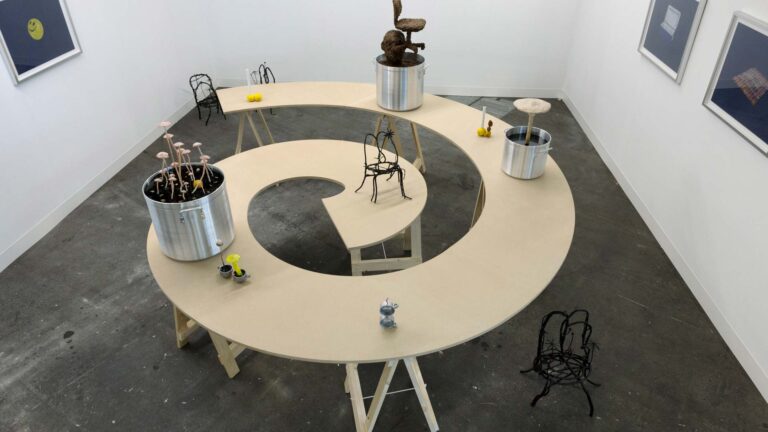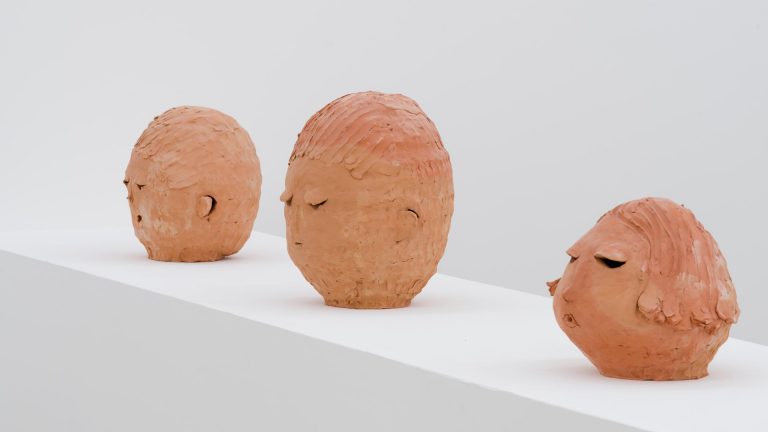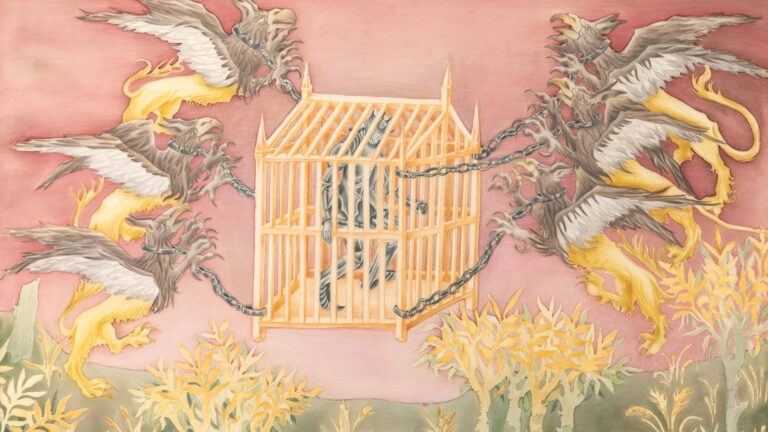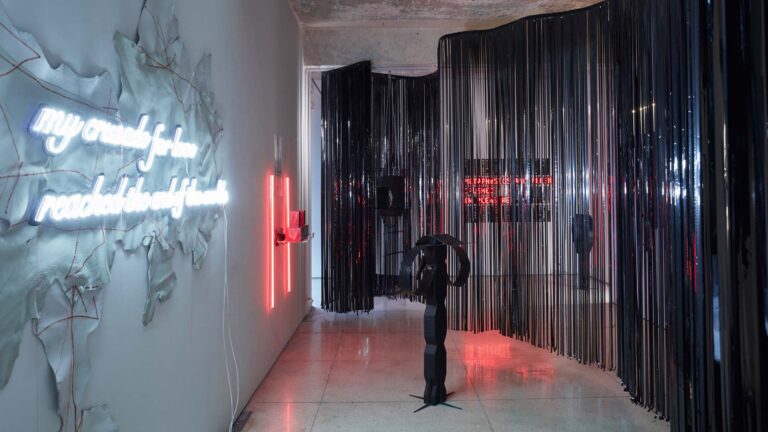Artist: Apparatus 22
Exhibition title: The Twists and Turns of the Speculative Still Life: What Would Charles Sterling Say?,
Venue: Suprainfinit, Bucharest, Romania
Date: November 16 – December 20, 2017
Photography: Ioana Parvan, all images copyright and courtesy of the artist and Suprainfinit, Bucharest
Apparatus 22 presents The Twists and Turns of the Speculative Still Life: What Would Charles Sterling Say?,a body of work that focuses on the inter-dimensional qualities of still life painting by manipulating and freeing the very aspects it holds to be true through experimentation of materials and visual as well as written language.
Throughout art history, the genre of still life artworks has been predominantly associated with depictions of everyday material life, with little room for deeper interpretation aside from technique or stylistic characteristics. As opposed to grander narrative works or those focused on the human subject, the still life abstains from illustrating events and embraces life’s routine, unexceptional qualities.
The speculative still life (coined by Apparatus 22 during their research and experimentation), on the other hand, allows for subjectivity and the opening of interpretation, activated by the viewer and its changing surroundings.
Speculative still lifes, imbued with contemporary symbols and disembodied prose, challenge the “finished” or “complete” aspects that traditional still lifes require, asserting them to a point of rupture.
By introducing language, the compositions break apart, and become subject to entirely unique interpretations by those who engage with them. In this regard, meaning arises from the endless speculation of one’s imagination, and recognizing the works to be in a constant state of transformation.
Figure I.Twenty-Four Hours
High above London we looked, knowing we couldn’t for very long. In quiet, in intervals, we watched the city move like anxious fingers tapping on a knee. For a moment, a barrier to entry had been broken.Years later, we tried to remember that day. Fragmented images – a splash from a truck tire onto a shoe, office-building lights flickering on at 4am, a well-groomed and empty park accessible to none. Recalling images half-fictitiously, half-uncovered. The door then closed on us and we saw everything at street-level once again.
Figure II.Seven Roses Slightly Withered
In a dimly lit room, the human imaginationreaches further than what reality presents. What one sees, and how one artificially fillsin the unknown spaces can spontaneously merge. Shadows, two green blinking eyes. The background becomes a pattern – floral. The information is there, but the mind wanders further. For each who enter, the scene shifts and molds itself accordingly through time, space, individual memories.
Figure III. All-You-Can-Eat
The most common still life scenes focus on edibles – freshly picked, baked, stacked high on silver trays. Far from theatrical story-telling or informative portrayals of history, still lifes often present objects of the every day, or what Charles Sterling referred to as rhopography. In the context of Suprainfinit’s temporary space, the long history of the building is illuminated through the still life, highlighting the main reason for visiting patrons over the years – food. The works function also as a critique on abundance and gluttony;poking and prodding at the very references they pay homage to.
Figure IV. This Isn’t a Bird
How does one unfreeze a landscape? Eschewing time and event with certainty, the natural world confirms its presence. Archival images stand stagnant. Triggered through language, the images transform, resisting categorization.
This isn’t a bird, this isn’t a stone, this isn’t a mountain.
Figure V. Taped and Boarded-up, a Bit Moldy
Lights off in the backroom of a storage space. A documentation of a documentation becomes a simulation. Re-created with overlapping qualities, but not quite perfect – it can never be the same twice. The archive sits in infinite space, invisibly everywhere.
Text by Christina Gigliotti























